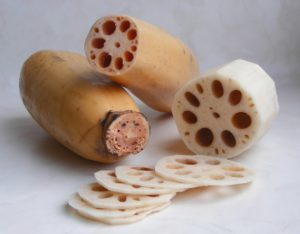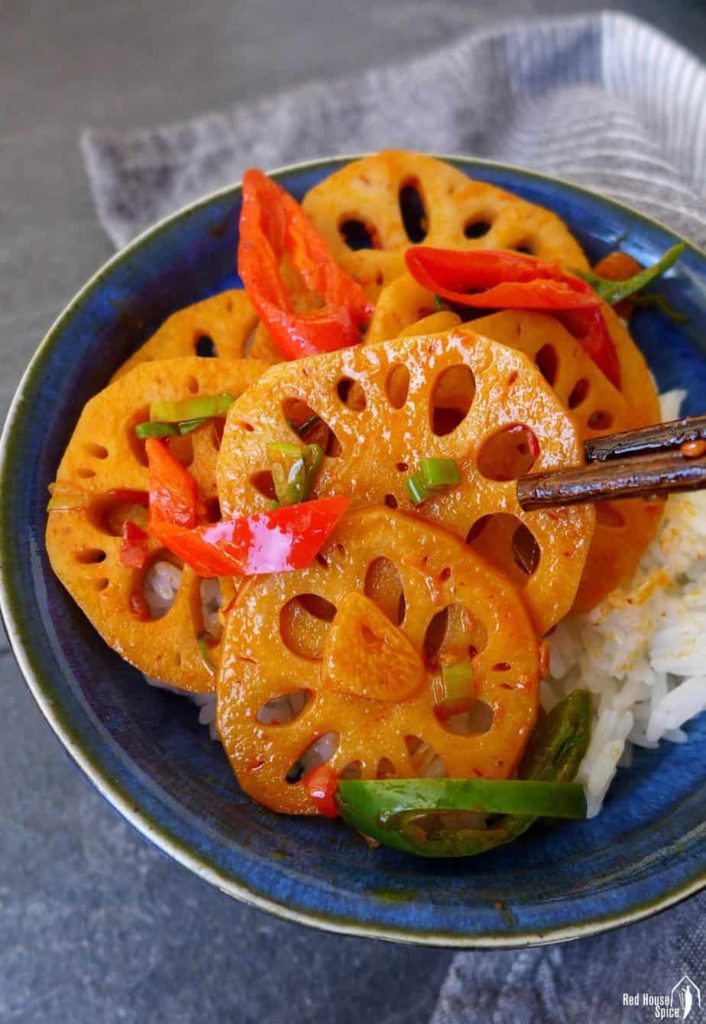Generation Hispanic TV - Live
Forget the Flower – Lotus Root Should be the New Gift to Yourself
Forget the Flower – Lotus Root Should be the New Gift to Yourself
[simple-author-box]
Lotus Root: the latest instalment in our Cultural Food column.

Lotus root with characteristic holes.
When one thinks about Asia and its greenery, it’s not too long before someone talks about the verdant gardens with ponds showing off the beautiful floating lotus pads. There is no denying that lotus root is a thing of visual beauty (when sliced into discs you see the characteristic, lace-like design with pea-sized holes), and that it has likely graced many a Chinese dish mainly as a garnish. There is so much more to lotus root though and here we are going to explore all things lotus to make it front and centre of your culinary experience.
Lotus root is the edible rhizome (the subterranean stem) of the lotus plant, a perennial aquatic plant that grows beautiful pink-hued or white flowers. It is part of the Nelumbonaceae family and is commonly grown in shallow ponds, marshes, lagoons and flooded fields.
Known as ren kon in Japan and ǒu in mainland China, lotus root is native to Asia, Australia, New Guinea and parts of the Middle East. It has been used for centuries for both its culinary and medicinal properties in Asia and held in high regard. The plant made its way across from the East along trade routes and was introduced to ancient Egypt around the 6th Century BC.
How to Shop, Store, Sauté Lotus Root

Lotus root can be eaten fried.
They are available year-round at most Asian grocery stores and will be packaged as the whole root. Look for firm roots with a smooth and unblemished skin. They are best kept in the refrigerator and when they are ready to be used, trim the ends and peel the outer skin. Slice them thinly into discs or cut into cubes. They brown easily so rinse the slices in vinegar or lemon water before cooking.
They can be cooked in stock to make a lotus root soup, stir fried, steamed, braised, pickled, deep-fried, sautéed or baked. The root is crunchy, mildly sweet and nutty in flavour, and has a texture that is a blend of water chestnut and potato.
Let’s Get to the Root of the Benefits
Lotus root is micronutrient dense, namely Vitamin C, B6, thiamin, phosphorus, potassium, copper and manganese as well as being a great source of dietary fibre. 100g contains 4/9g of fibre which paired with its slow-digesting complex carbohydrate profile helps to keep you feeling fuller for longer and support overall gut health.
A simple way to incorporate it into dishes is in stir fries, and here is a quick and easy recipe for pickled lotus root stir fried rice (available in most Asian stores) to get you going.
Lotus Root Stir Fry Recipe

- Serves 2
- Prep time: 10 minutes
- Cook time: 10 minutes
Ingredients
- 3 tbsp sesame oil
- 1 tsp minced garlic
- ½ tsp turmeric powder
- 200g stale cooked brown rice/packet brown rice (or cauliflower rice)
- 100g firm tofu (crumbled)
- 80g frozen peas
- 2 tbsp hoisin sauce
- 80g preserved mustard greens
- 80g pickled lotus root (sliced)
Directions
- To a hot wok add the oil until warm and sauté the garlic and turmeric before adding the rice, crumbled tofu and peas.
- Stir in the wok for 5 minutes to cook through before adding the hoisin sauce and mixing through until warmed throughout.
- Before serving, stir through the mustard greens and sliced lotus root.



